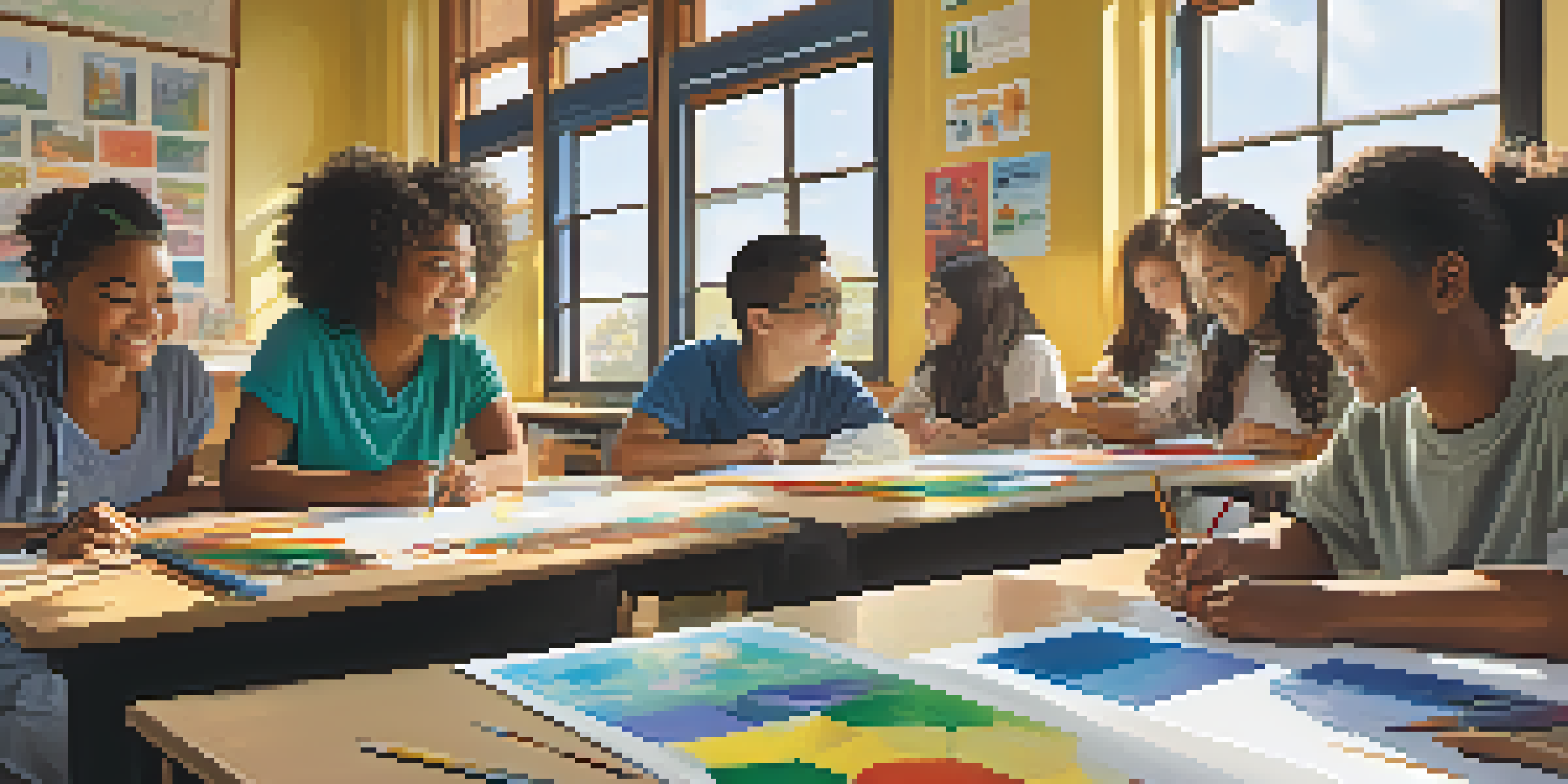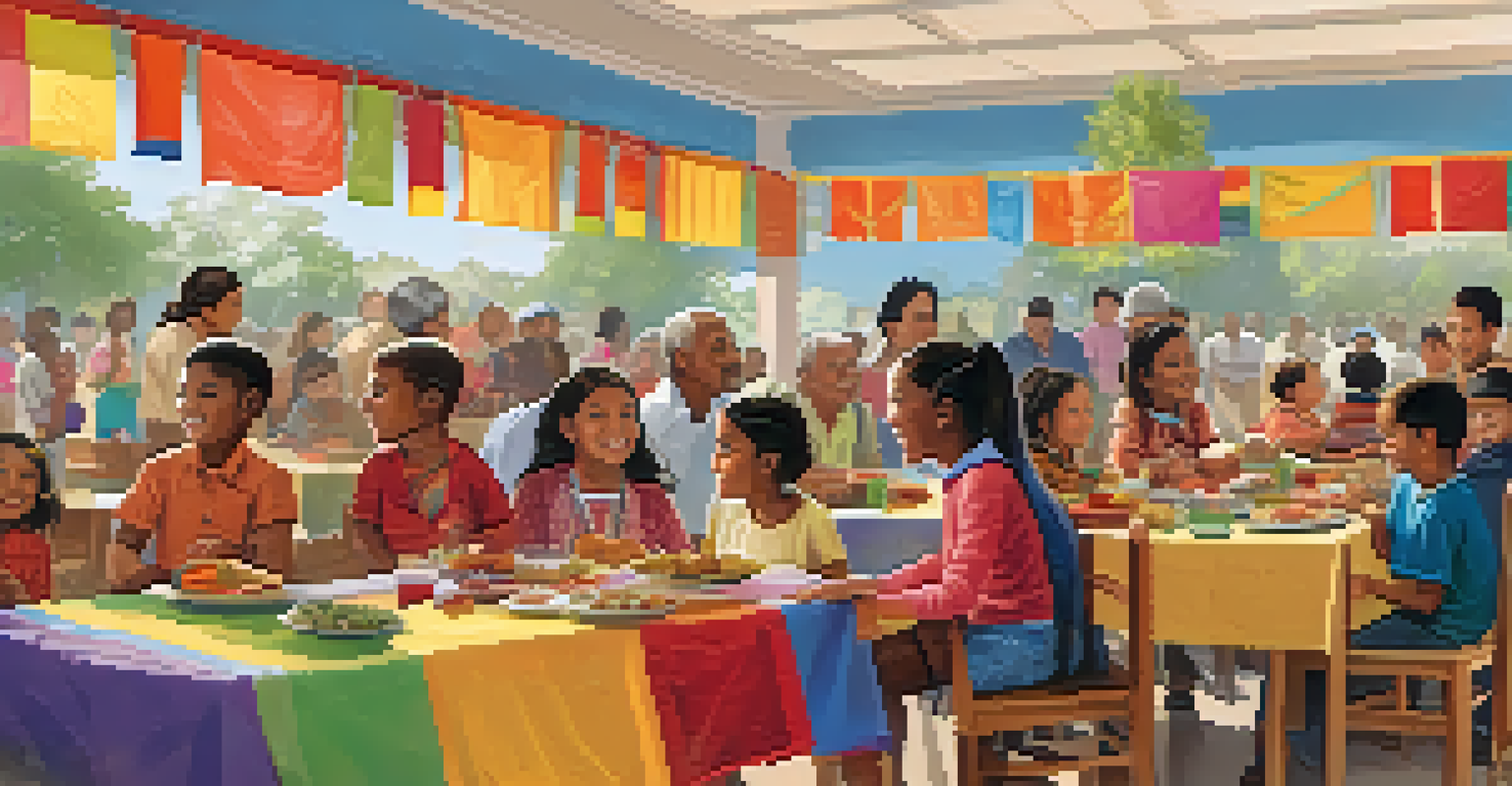Cultural Competence: Navigating Diversity in the Classroom

Understanding Cultural Competence in Education
Cultural competence refers to the ability to interact effectively with people from different cultures. In the classroom, this means recognizing and respecting the diverse backgrounds of students, which can include their ethnicities, languages, and belief systems. It's not just a buzzword; it's a skill that can significantly enhance the learning experience for all.
Diversity is not a reason for division; it is a reason for celebration and connection.
When educators are culturally competent, they create a welcoming environment where every student feels valued. This involves actively listening to students’ experiences and integrating their perspectives into the curriculum. By doing so, teachers help dismantle stereotypes and foster a sense of belonging, making the classroom a safe space for exploration and growth.
For instance, a teacher who understands cultural nuances might adjust their teaching methods to include stories from various cultures. This not only enriches the learning material but also helps students see themselves reflected in their education, which can boost engagement and academic performance.
The Importance of Diversity in the Classroom
Diversity in the classroom is not just about race or ethnicity; it encompasses different learning styles, abilities, and life experiences. A diverse classroom mirrors the real world, preparing students to navigate a multicultural society with confidence. When students learn alongside peers from various backgrounds, they gain new perspectives that challenge their assumptions and broaden their understanding.

Moreover, diverse classrooms can enhance critical thinking skills. When students are exposed to differing viewpoints, they learn to analyze information more deeply and consider alternative solutions to problems. This collaborative learning environment encourages creativity and innovation, essential skills in today’s globalized world.
Cultural Competence Enhances Learning
Culturally competent educators create inclusive classrooms that respect diverse backgrounds, fostering a sense of belonging and boosting student engagement.
For example, a group project that includes students from various cultures can lead to unique ideas and approaches that one homogeneous group might overlook. Such interactions not only enrich the educational experience but also help build empathy and understanding among students.
Barriers to Cultural Competence in Education
Despite its importance, achieving cultural competence can be challenging due to existing biases and stereotypes. Educators may unconsciously favor certain cultural norms, which can alienate students from diverse backgrounds. This lack of awareness can create an environment where some students feel marginalized, ultimately impacting their academic success.
Cultural competence is not an endpoint but a journey; it requires continuous learning and adaptation.
Another barrier is the limited training that many teachers receive regarding cultural competence. Without proper education and resources, it's difficult for educators to fully understand and appreciate the diverse cultures represented in their classrooms. This gap can lead to miscommunications and misunderstandings that hinder the learning process.
For instance, a teacher might unintentionally overlook a student's cultural practices during a lesson, leading to feelings of exclusion. Recognizing these barriers is the first step toward fostering a more inclusive environment where all students can thrive.
Strategies for Developing Cultural Competence
Developing cultural competence requires intentional effort and ongoing learning. One effective strategy is engaging in professional development focused on diversity and inclusion. Workshops and training sessions can provide educators with the tools and knowledge to better understand their students’ cultural backgrounds.
Additionally, teachers can seek to build relationships with their students by learning about their cultures through conversations and shared experiences. This personal connection not only helps educators tailor their teaching methods but also demonstrates to students that their identities are valued in the classroom.
Diversity Prepares Students for Life
A diverse classroom environment equips students with critical thinking skills and broadens their perspectives, preparing them for a multicultural society.
Implementing inclusive teaching strategies, such as using culturally relevant materials and diverse examples in lessons, can also make a significant difference. By actively incorporating various cultural perspectives, educators can create a richer curriculum that resonates with all students.
The Role of Family and Community in Cultural Competence
Family and community play a crucial role in enhancing cultural competence within the classroom. Involving parents and guardians in the educational process can provide valuable insights into students’ cultural backgrounds and experiences. Schools can host events that celebrate diversity, encouraging families to share their traditions and stories.
Building partnerships with community organizations can also help educators gain a deeper understanding of the cultural contexts affecting their students. These collaborations can lead to resource sharing, mentorship opportunities, and enriched learning experiences that extend beyond the classroom walls.
For instance, inviting community leaders to speak about their cultural heritage can inspire students and foster a sense of connection between school and community. This holistic approach creates a supportive environment where cultural competence thrives and benefits everyone involved.
Assessing Cultural Competence in the Classroom
Assessing cultural competence is essential for measuring progress and identifying areas for improvement. Educators can use surveys, self-reflection, and peer evaluations to gauge their understanding and implementation of culturally competent practices. This assessment process not only holds teachers accountable but also encourages continuous growth.
Additionally, creating an environment where students feel comfortable providing feedback can offer valuable insights into their experiences. Regularly check-in with students about their feelings of inclusivity and representation can guide educators in refining their teaching methods and addressing any challenges.
Community Involvement is Key
Engaging families and community organizations enriches cultural competence in education, providing valuable insights and support for students' diverse experiences.
For example, conducting anonymous surveys about classroom dynamics can reveal areas where students feel disconnected or marginalized. This information allows teachers to make necessary adjustments, ensuring that cultural competence remains a priority in their educational approach.
The Future of Cultural Competence in Education
As classrooms continue to grow more diverse, the need for cultural competence will only increase. Future educators must be equipped with the skills and knowledge to navigate this evolving landscape effectively. By prioritizing cultural competence in teacher training programs, we can prepare the next generation of educators to meet the needs of all students.
Moreover, ongoing dialogue about diversity and inclusion in education is vital for fostering an inclusive society. Advocacy for systemic changes, such as diverse hiring practices and inclusive curricula, can create lasting impacts on schools and communities. By addressing these systemic issues, we can create a more equitable educational environment for everyone.

Ultimately, cultural competence is not a destination but an ongoing journey. By embracing diversity and committing to continuous learning, educators can help shape a brighter future for their students and society as a whole.